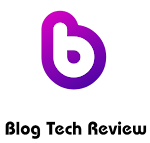A Comparison of Chat GPT-1 and Chat GPT-4: What’s the Difference?
Chatbots are becoming increasingly popular as a way to provide customer service, automate tasks, or even just have some fun conversations. But what makes one chatbot better than another? In this blog post, we will compare two of the most advanced chatbot models available today – OpenAI's Generative Pre-trained Transformer 1 (GPT-1) and its successor, GPT-4. We'll look at their differences in terms of architecture, capabilities, performance metrics, and more. By the end of this article you should be able to make an informed decision about which model is best for your needs.
Architecture:
The main difference between these two models lies in their architectures. While both use transformer networks based on Google’s BERT technology for natural language processing (NLP), they differ significantly when it comes to how those transformers are used within each model. The original GPT uses 12 layers with 768 hidden units per layer while GPT-4 has 24 layers with 1024 hidden units per layer - making it twice as deep and wider than its predecessor. This means that GPT-4 can process larger amounts of data faster than before due to its increased size and depth allowing it to learn from more complex datasets quickly without sacrificing accuracy or speed.
Capabilities:
In addition to having different architectures, these two models also offer different capabilities when it comes to NLP tasks such as sentiment analysis or question answering systems (QAS). For example, while both can generate text given a prompt like “I am feeling…” , only GPT 4 offers features like automatic summarization where it can take long passages of text and condense them into shorter summaries using fewer words but still retaining all relevant information from the source material . Additionally , while both support dialogue generation through conversation modeling techniques , only GPT 4 supports multi turn dialogues meaning that users can ask multiple questions back and forth without needing any additional input other than what was initially provided by the user .
Performance Metrics :
When comparing these two models side by side there are several key performance metrics that need consideration including accuracy scores , training time , inference latency etc . On average GPT 4 outperforms GPT 1 across all categories however depending on specific task requirements either may be preferable over the other . For instance if high levels of accuracy are needed then GPT 4 would likely be preferred whereas if low latency is desired then GPT 1 might be chosen instead .
Summary :
OpenAI's Generative Pre Trained Transformers 1(GPT 1 )and its successor GPT 4 offer significant improvements over previous generations thanks largely due their improved architectures which allow them handle larger datasets quicker whilst maintaining high levels accuracy . Furthermore they possess unique capabilities such as automatic summarization & multi turn dialogue generation respectively enabling developers create powerful conversational AI applications tailored towards specific use cases & scenarios . Ultimately though choosing between them depends heavily upon individual project requirements so careful evaluation must done order determine.

0 Comments